Spherical Mirrors
Key Notes:
Definition:
Spherical Mirrors: Mirrors with a reflecting surface that forms part of a sphere. They are of two types:
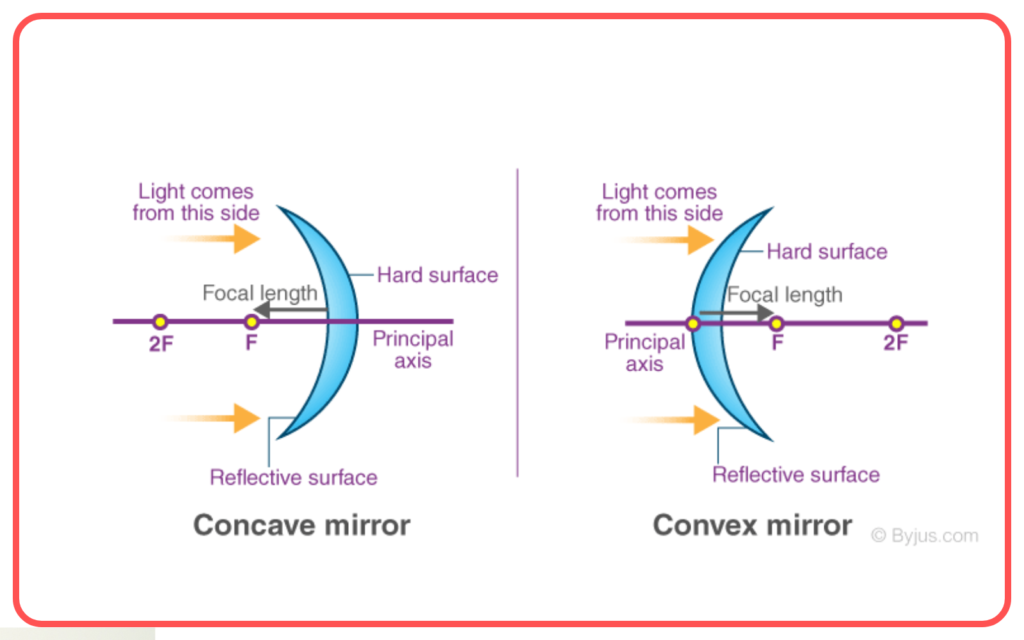
- Concave Mirror: Inner surface is reflective.

- Convex Mirror: Outer surface is reflective.
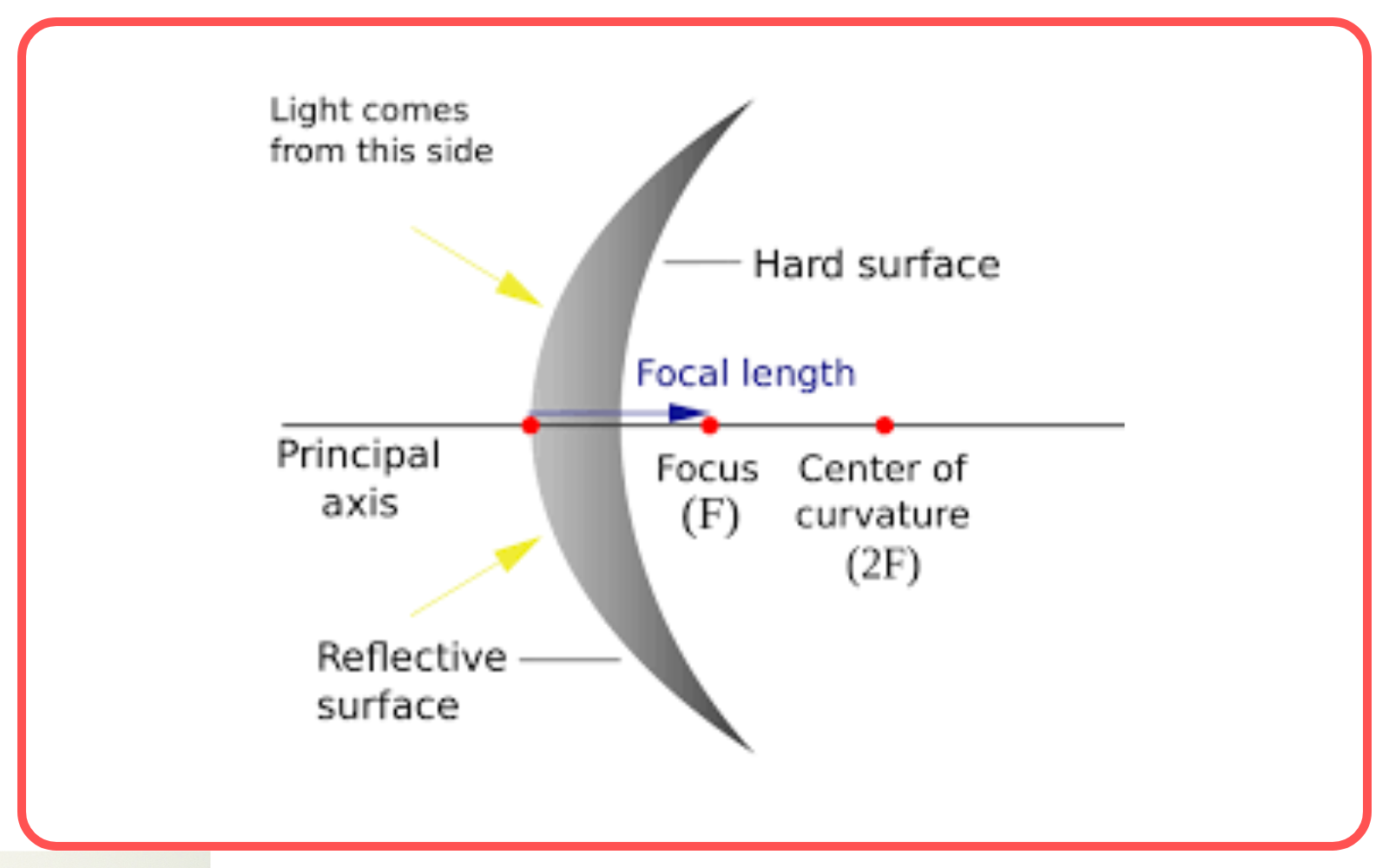
Important Terms:
- Pole (P): The center of the mirror’s surface.
- Center of Curvature (C): The center of the sphere of which the mirror is a part.
- Radius of Curvature (R): The distance between the pole and the center of curvature.
- Principal Axis: A straight line passing through the pole and center of curvature.
- Focus (F): The point where parallel rays of light converge (concave) or appear to diverge (convex) after reflection.
- Focal Length (f): The distance between the pole and the focus. f = R/2.
Mirror Formula:
1f = 1/v−1/u
- f: Focal length
- u: Object distance
- v: Image distance
Magnification:
m = −v / u
- m: Magnification
- v: Image distance
- u: Object distance
Laws of Reflection:
- Angle of incidence = Angle of reflection.
- Incident ray, reflected ray, and normal all lie in the same plane.
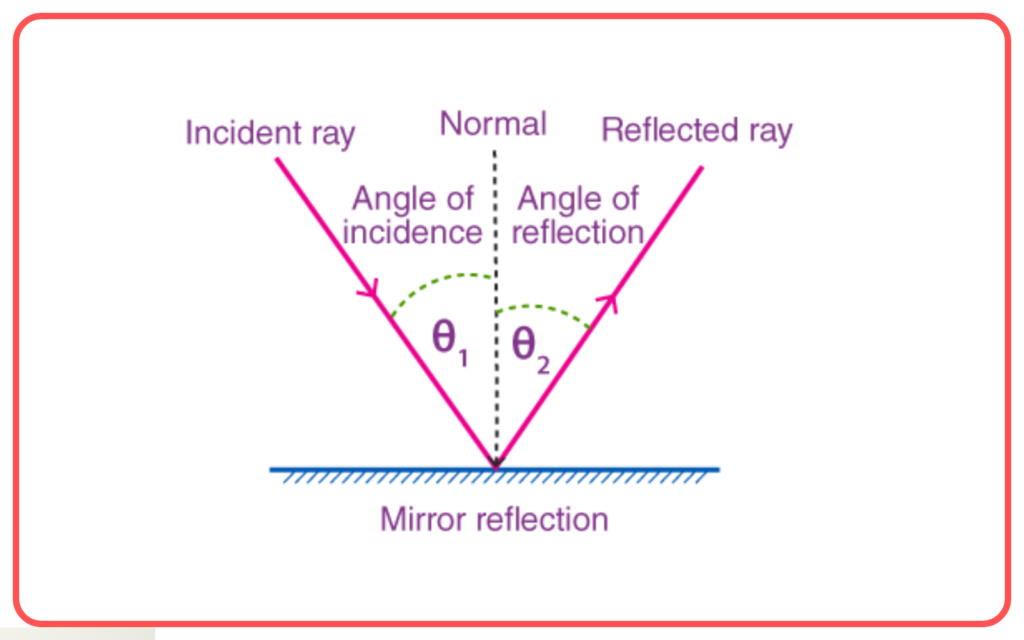
Image Formation by Spherical Mirrors:
- Concave Mirror:
- Can produce real or virtual, upright or inverted images depending on the object position.
- Used in devices like telescopes, headlights, and shaving mirrors.
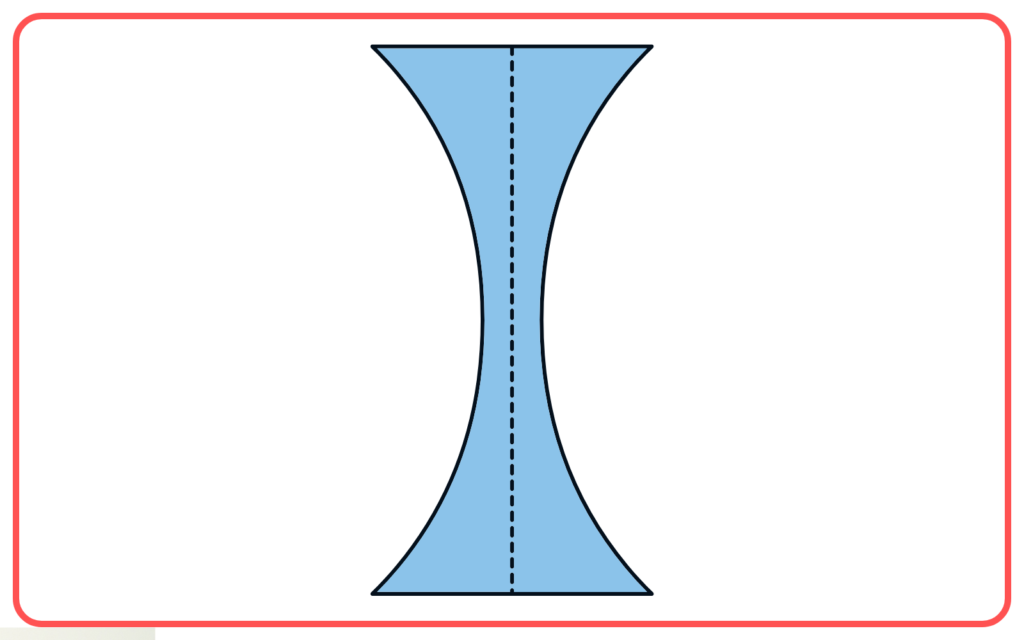
- Convex Mirror:
- Always produces virtual, upright, and diminished images.
- Used as rear-view mirrors in vehicles.
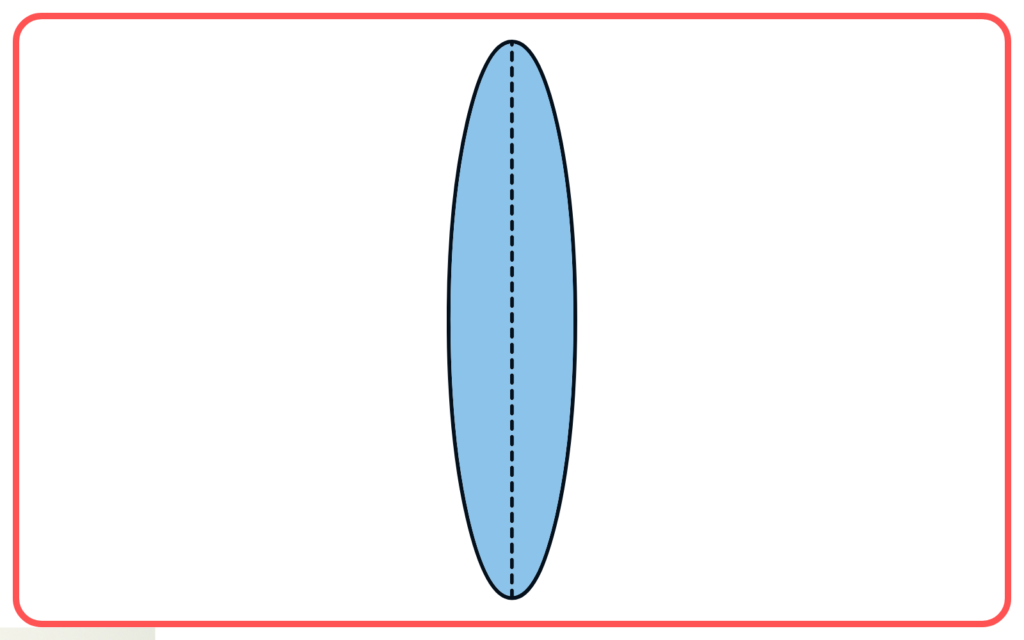
Ray Diagrams:
- Concave Mirror:
- Key rays: Parallel to principal axis, through the focus, and through the center of curvature.
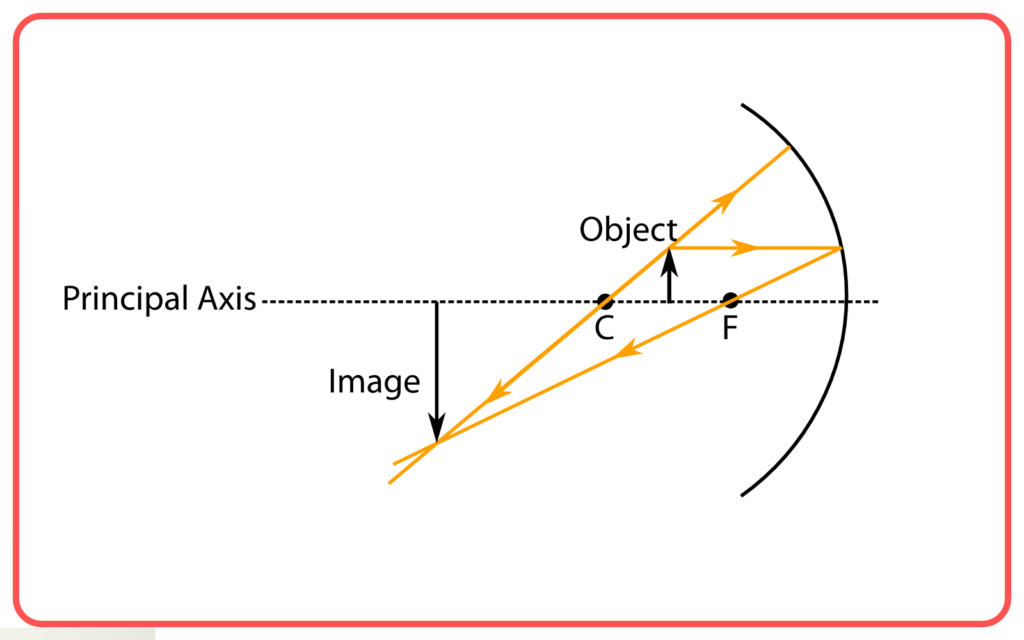
- Convex Mirror:
- Key rays: Parallel to principal axis and appear to diverge from the focus.
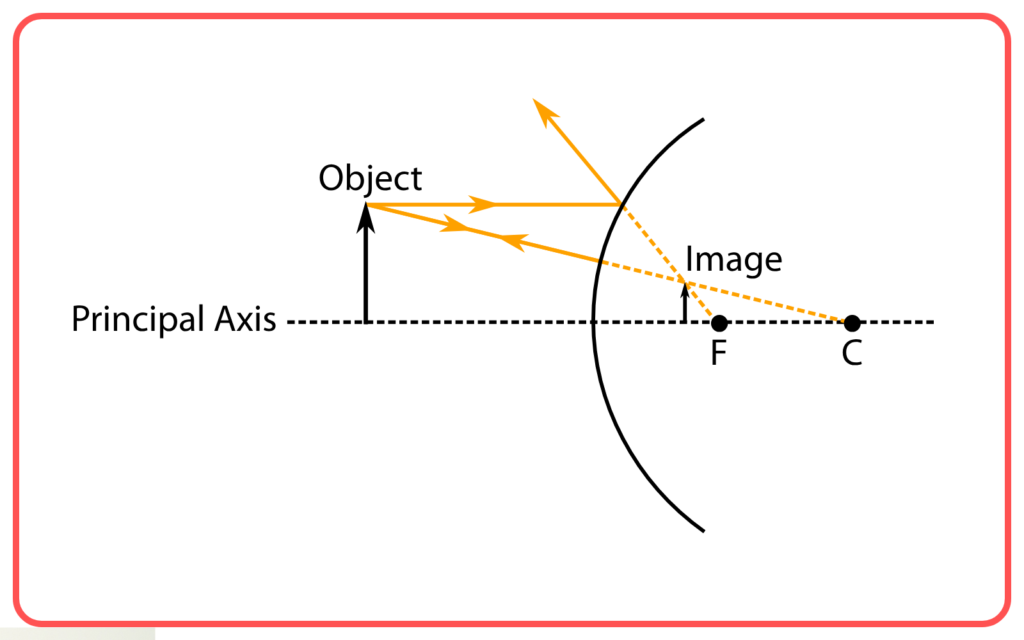
Let’s practice!

